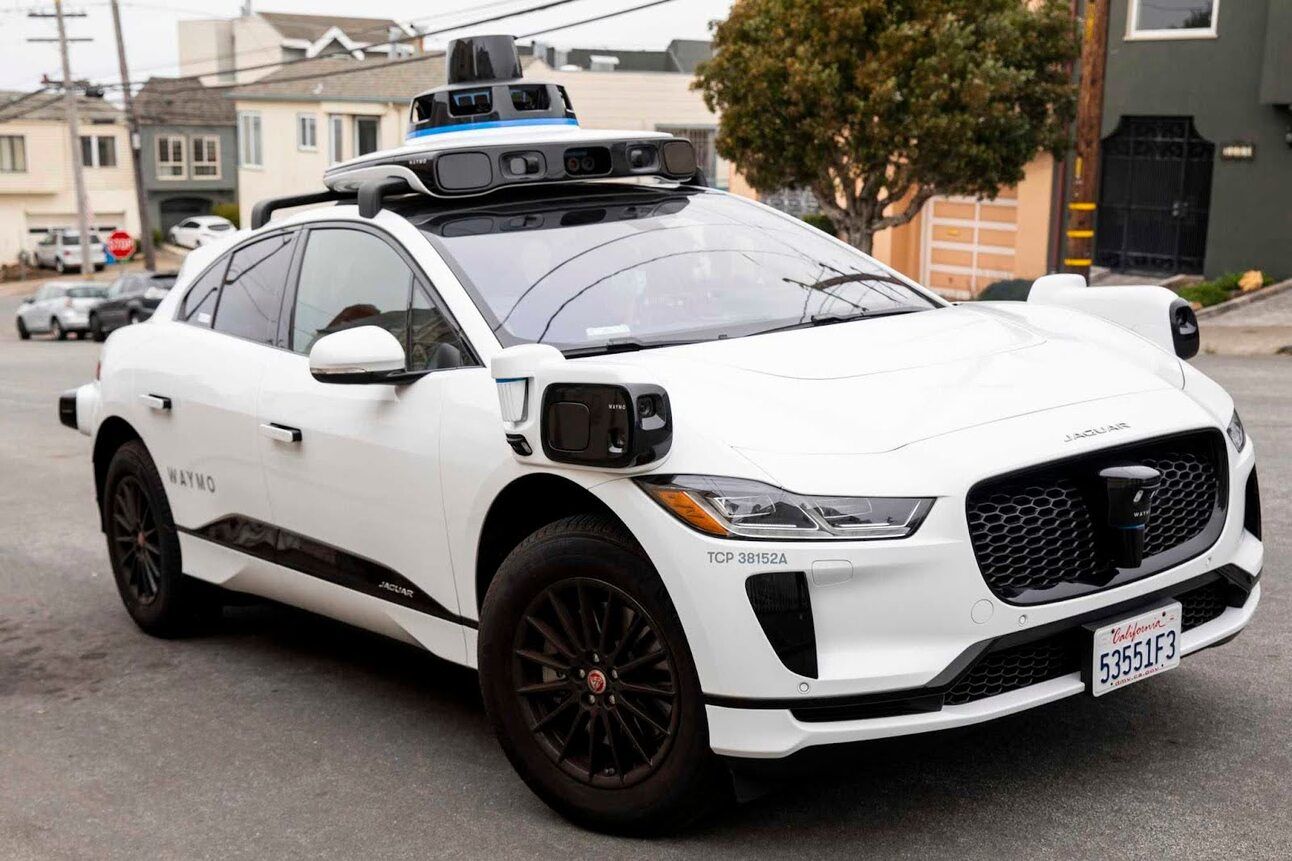- The Rideshare Guy
- Posts
- How Uber & Lyft Drivers Can Benefit from the Proliferation of Autonomous Vehicles
How Uber & Lyft Drivers Can Benefit from the Proliferation of Autonomous Vehicles
Check out this driver who has earned $925 in lifetime earnings with Play Octopus! Not bad for just over a year of using it.
Sign up for Octopus here and you’ll get a $25 bonus once you start driving!


How Uber & Lyft Drivers Can Benefit from the Proliferation of Autonomous Vehicles
The arrival of autonomous vehicles (AVs) has long been seen as a threat to Uber and Lyft drivers. After all, if cars can drive themselves, where does that leave the people behind the wheel? It’s a valid concern and one that’s been on the radar since ride-hailing apps first began testing self-driving technology a decade ago. But the narrative that AVs will render human drivers obsolete is both simplistic and, at least in the near term, misleading. In reality, drivers can benefit from the autonomous vehicle revolution if they play their cards right.
Autonomous vehicles are not arriving overnight. They’re coming gradually, in specific cities and under constrained conditions. And that slow rollout presents opportunities. From new job types to support roles, enhanced gig work, and entrepreneurial ventures, there are multiple paths for drivers to stay relevant and even thrive in a future shaped by self-driving technology.
Waymo & Tesla Robotaxis are being deployed around the nation. They already may be taking away trips from millions of drivers in cities like San Francisco, Los Angeles, Atlanta, Austin and Phoenix! I will post a lot more content on this subject shortly, one must learn how to adapt and pivot!

The Current Landscape of AVs in Rideshare
As of mid-2025, the AV industry is progressing, but far from mass adoption. Waymo, Cruise (now rebooting after safety concerns), Zoox, and Aurora are running limited pilot programs in cities like San Francisco, Phoenix, Austin, and Las Vegas. Uber and Lyft have partnerships with some of these companies, letting customers opt in to self-driving rides.
Yet despite all the hype, autonomous vehicles still face challenges: unpredictable traffic patterns, bad weather, complex pedestrian interactions, and the need for massive infrastructure investment. The idea that AVs will dominate all urban transport within a few years is far-fetched.
That gives current Uber and Lyft drivers a window—not just to adapt, but to capitalize.

1. Hybrid Ride-Hailing Fleets Create Demand for Human Support
In cities where Uber and Lyft operate AV fleets, there's often still a need for human involvement. These vehicles might be “driverless,” but they’re not always autonomous in every sense. Many AVs have remote operators overseeing trips. Sometimes vehicles require manual repositioning, maintenance, or customer service when things go wrong.
That means Uber and Lyft drivers can shift into support roles, becoming AV fleet operators, remote vehicle supervisors, customer assistance agents, or safety response drivers. These roles might not require full-time driving but can offer stable income, often with hourly pay and benefits. Companies like Waymo and Tesla have already hired “fleet technicians” and “autonomous specialists” many of whom are former gig workers.
2. Drivers Can Own/Lease AV Fleets in the Future
As AV technology matures, ownership models are likely to diversify. Not every autonomous vehicle will be owned by a big tech company. Some will be available for lease or financing by individuals, just like traditional cars are today.
Imagine a world where a driver doesn’t have to physically drive all day, but can still generate passive income by managing one or several AVs. Think of it as becoming a mini-fleet manager or AV entrepreneur. Drivers could own a self-driving car, deploy it on Uber or Lyft’s network, and earn passive income while doing other work or simply enjoying their time.
This model resembles how many Uber drivers once built mini fleets with human drivers before regulations changed. AVs could revive that model, with less operational hassle and the potential for scalable earnings.
3. Upskilling: From Driver to Technician or AV Operator
One of the most practical ways for Uber and Lyft drivers to stay relevant is to upskill.
The AV industry requires a new class of worker. People who understand vehicle maintenance, sensor calibration, software troubleshooting, and teleoperation. While these jobs are more technical, many companies offer training or apprenticeships, particularly for candidates who already understand rideshare logistics and customer service.
Drivers already possess a strong foundation: They know urban traffic patterns, rider behavior, and the nuances of gig work. By adding technical certifications or taking courses in AV operations, robotics, or transportation systems, they can pivot into higher-paying, longer-term careers in the transportation sector.
Think of it like this: AVs won’t eliminate all jobs, they’ll shift them. And those who get ahead of the curve can ride the wave, not be drowned by it.
Check out our show, Show Me The Money Club, recorded LIVE on YouTube each week!
4. More Affordable Rides = More Riders = New Opportunities
One overlooked benefit of autonomous vehicles is their potential to reduce ride costs over time. Once scaled, AVs could eliminate the biggest cost in a rideshare trip: the driver. While this might seem like bad news for human drivers, it could actually lead to an explosion in demand for on-demand transport.
Cheaper rides mean more people use them. That can create more opportunities for traditional drivers in hybrid markets. In neighborhoods or suburbs where AVs aren’t yet deployed or where infrastructure doesn’t support them. Human drivers will still be needed.
Additionally, as demand rises, there will be increased need for delivery, ride assistance for elderly or disabled passengers, luggage handling, and other personalized services that AVs can’t easily provide. Uber drivers who specialize in high-touch experiences could find a lucrative niche.
5. Rural and Complex Environments Will Still Rely on Human Drivers
Autonomous vehicles are best suited to dense urban cores with mapped roads and controlled environments. In rural areas, mountainous terrain, or weather-exposed regions, AVs struggle.
That means drivers in these markets may see little to no disruption for years perhaps decades. Uber and Lyft will continue relying on human drivers for these areas, and with fewer drivers on the road (due to AV migration to urban centers), competition may even lessen.
In fact, drivers in “edge zones” where AVs can’t operate but demand is growing could find themselves in higher demand than ever before.
No matter how advanced AI becomes, there are situations where people prefer people. Riders with medical conditions, those who need help carrying groceries, or parents traveling with small children may feel uncomfortable in a driverless car.
Savvy Uber and Lyft drivers can tailor their service to these demographics, offering premium human-driven experiences with add-ons like car seats, assistance, comfort, and conversation. Apps may even start segmenting ride types (e.g., “Assisted Ride,” “Human Driver Preferred”), allowing drivers to earn more by offering specialized value.
7. Leverage Time Gained from AVs to Diversify Income
For many gig workers, time is money but also opportunity. AVs could eventually reduce the hours human drivers need to be on the road by offering backup shifts or passive income options. That opens up time for drivers to invest in other ventures real estate, online businesses, content creation, investing/trading or side hustles.
The idea is not to fight technology, but to use it. AVs could offer drivers a way to transition into more flexible, diversified income models. Many of today’s top drivers already combine rideshare with YouTube channels, coaching, consulting, or investing/trading. I created a finance Youtube channel just for informing and educating current drivers. AVs could accelerate this trend by freeing up time and mental energy.
My Take: The rise of autonomous vehicles doesn’t have to spell doom for Uber and Lyft drivers. It all depends on how one responds to change.
I will have a lot more coming up regarding the AV onslaught and how the Rideshare Guy Driver Community can benefit from this revolution. When one is handed lemons, one needs to learn how to make lemonade!
Yes, the gig economy is shifting. But with that shift comes new roles, new business models, and new ways to make money. AVs will need human support for the foreseeable future, especially in unpredictable environments. Drivers who stay informed, open to learning, and willing to adapt will find ways to thrive.
Whether it’s by becoming AV operators, managing/owning a fleet, focusing on underserved areas, or offering high-touch services that robots can’t replicate, Uber and Lyft drivers have a unique window of opportunity. Rather than being replaced, they can be redefined as pioneers in the next era of transportation.
In the end, the smartest drivers won’t just survive the AV wave—they’ll ride it!
We, at the Rideshare Guy have created this amazing community of Support! The steering wheel doesn’t define you. You do!

Did someone forward you this newsletter? Subscribe now for free so you never miss an update…
Never miss a Rideshare Guy update…